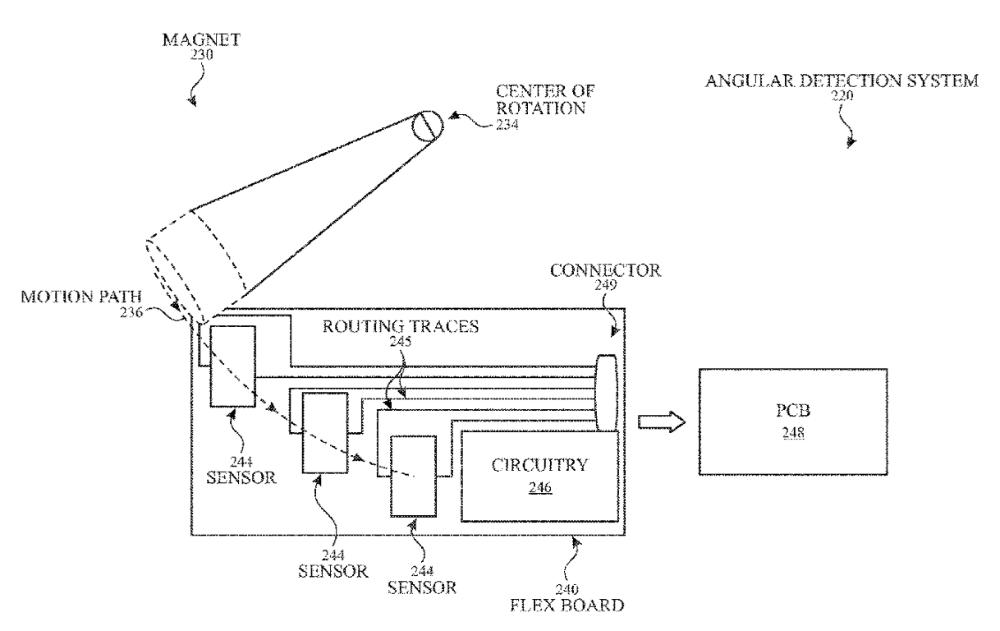The rumored “Apple Glasses” — an augmented reality (AR) head-mounted display (HMD) — may automatically detect, respond to your physical movements. Apple has been granted a patent (number 10,557,724) for “angle detection of a rotating system using a single magnet and multiple hall sensors.”
The Apple gadget will arrive this year, next year, or 2021, depending on which rumor your believe. It may or may not have to be tethered to an iPhone to work. Other rumors say that Apple Glasses could have a custom-build Apple chip and a dedicated operating system dubbed “rOS” for “reality operating system.”

In the patent filing info, Apple notes that AR tech can be simulated using one or more electronic devices. One electronic device can be a headset, (Apple Glasses) where the user can use the headset to see the simulated augmented or virtual environment. As the user moves his or her head to look around, a display included in the headset can update to reflect the user’s head movement.
The headset can be worn on the user’s head while the user is interacting with the VR system and can be removed from the user’s head at other instances. Apple says that, in some examples, it may be beneficial for the VR headset to be able to detect when a head-worn device (e.g., headset, eyeglasses, headphones, etc.) is being removed from the user’s head, is being placed on the user’s head, or both.
Here’s Apple’s summary of the patent filing: “An angular detection system including a magnet and sensors is disclosed. The magnet can be located on a rotating component and the sensors can be located on a stationary component, or vice versa. The magnet can generate a plurality of magnetic flux lines.
“The plurality of sensors can be located and spatially separated along the motion path of the magnet for detecting the magnetic flux densities. The strength of the magnetic flux lines sensed by a given sensor can be used to determine the location of the magnet along its motion path. The plurality of sensors can generate one or more signals indicative of the strength of the sensed magnetic field lines. Based on the strength of the magnetic flux lines, the location of the magnet, or both, the system can determine the angle of rotation of the device by using a polynomial function or a look-up table.”
